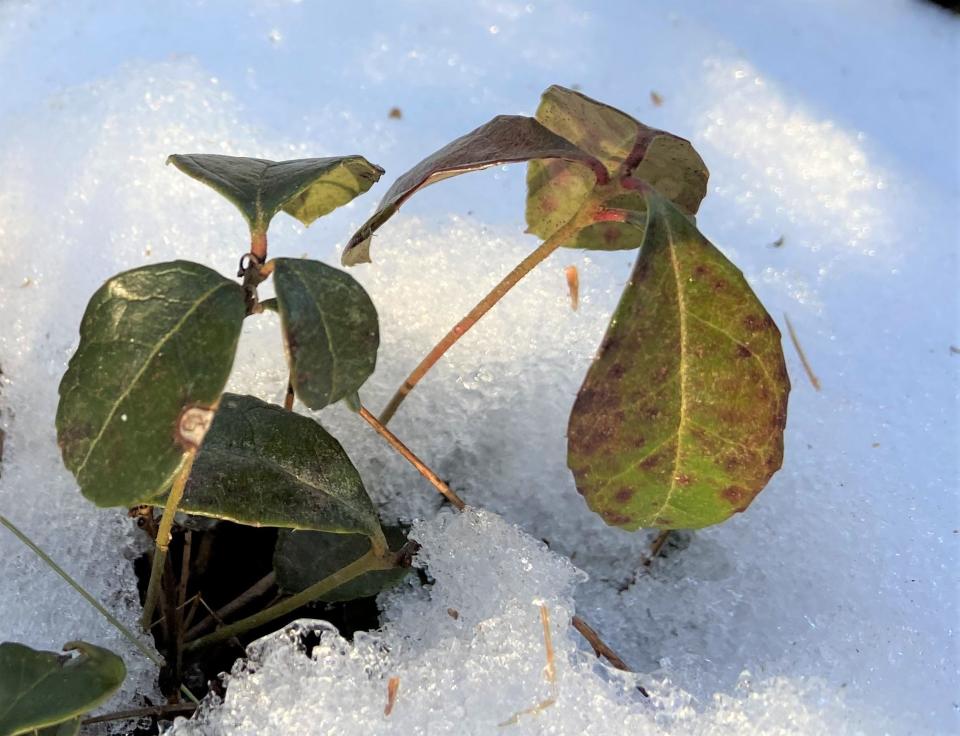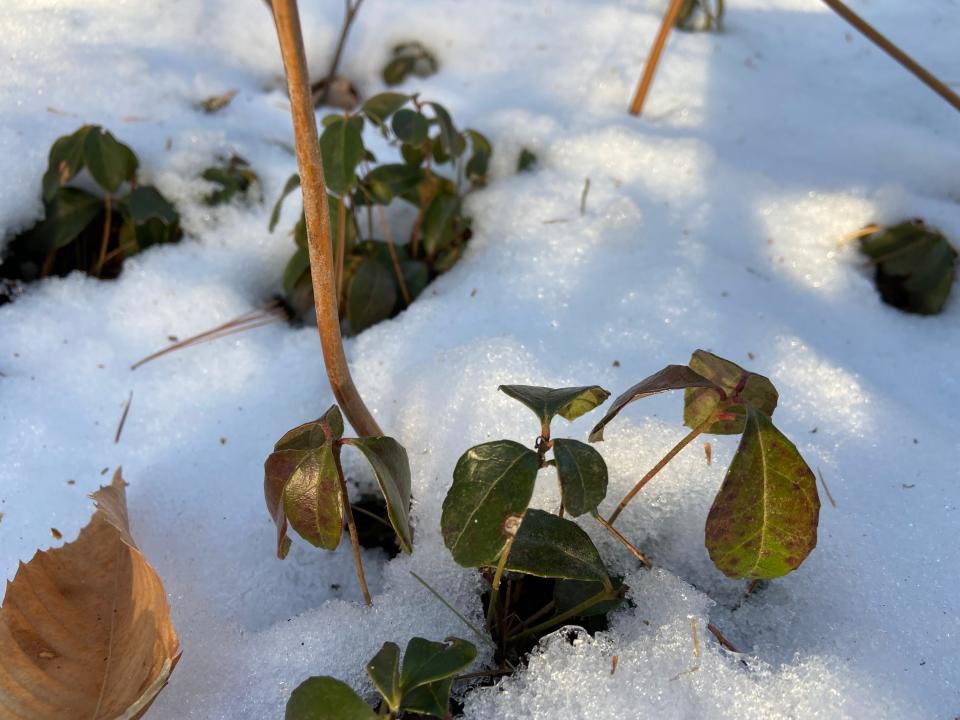It seems like a miracle teaberry can survive the winter: But it's not. Here's how it works.
The snow isn’t too deep yet, so now is a good time to go look for one of the more rugged little plants to grace our woodlands - teaberry.
Teaberry, also known as winterberry and checkerberry (sometimes even called boxberry), whose scientific name is Gaultheria procumbens, is an evergreen, low-growing shrub or ground cover with dangling white flowers that develop into bright red berries.
You will find glossy green, slender to almost round leaves holding their own against the cold and snow. How does it do this? Why are the leaves so glossy? Why, if you crumble a leaf and smell it, does it emit that characteristic wintergreen smell that graced Teaberry gum, a gum you might remember with fond nostalgia if you are as old as I am?

Nature News: Speckled alders have hidden superpowers
Teaberry occurs from Newfoundland and New England south to Georgia (in the mountains) and west to Minnesota. While in the southern part of its range it might not often have to deal with snowy, cold winters, over most of its range it does. Cold winters provide two major challenges for plants, freezing temperatures can cause cells to rupture and freezing temperatures that lock up water as ice so plants can succumb to dehydration. Plants have a number of adaptations that help them deal with these conditions.
Deciduous plants drop their leaves to avoid losing too much water to the atmosphere during the freezing and therefore dry winter. The problem with this is that they will need to grow new leaves every spring and miss opportunities to photosynthesize on warm, sunny winter days as well as in the late fall to early spring. It also takes a lot of energy to produce new leaves.
Evergreens hold onto their leaves, they can photosynthesize all year (as long as it is sunny and warm enough) and have adaptations that help minimize water loss. A thick waxy cuticle (outer layer on the leaf) helps reduce water loss to the atmosphere. That’s why teaberry has that nice glossy leaf. That’s the waxy cuticle.
Both broad leaves and even needle-shaped leaves can curl up as temperatures approach freezing, protecting the little pores on the underside of the leaf (the stomata) that release water vapor into the atmosphere as the plant breathes. To prevent frostbite, evergreen plants will often produce excess sugars that act as antifreeze, lowering the freezing point for their cells. Hugging the ground and getting buried by snow also helps with insulation.

Nature News: How to identify a mystery fish (or anything in nature)
This past weekend, temperatures plummeted into the sub-zero, but as soon as the sun came out and warmed the teaberry leaves, they could soak that sun in, photosynthesize and turn the sunlight into sugar. This sounds easy, but one weird thing about staying green in winter is that these little plants can get too much sun. The forest canopy is gone. In the winter, if it is too cold for photosynthesis, the leaf still absorbs the sunlight, and with nowhere to go the sunlight can damage the leaf – similar to how we can get sunburned.
To help prevent this, these evergreen plants will often produce more red pigments (anthocyanins) that serve as sunscreen. Plants like teaberry don’t exactly thrive in winter, but they hang on, ready to start photosynthesizing for real on those first warm days of spring, ahead of their deciduous counterparts.
Teaberry’s characteristic wintergreen smell is one of its most delightful traits. The smell comes from methyl salicylate - the primary component of wintergreen oil. Wintergreen oil (derived primarily from our local wintergreen and its Asian cousin) has been used as a flavoring (tea more traditionally, gum more recently), medicinally, in particular as an ointment for aching muscles and also in perfumes and toothpastes. Luckily for teaberry, the manufacture of synthetic methyl salicylate has reduced the harvest of this woodland plant.
I originally learned about teaberry as a "trail nibble." We would pick a leaf or two and nibble on it while walking along (the berries are also edible). However, while this is a delightful plant to want to consume (though methyl salicylate can be harmful in large quantities), teaberry is an important part of forest ecosystems and should be left alone to do its thing - native wildlife need these trailside snacks much more than we do.
Teaberry, one of the few green leaves around in winter, is an important winter food for a variety of native wildlife. Chipmunks, grouse, turkey, bear, mice, fox and deer all eat the leaves during winter.
If you are establishing a wildlife garden, teaberry would be an excellent addition. It likes acidic soil in dappled sunlight (will produce more flowers and berries with some midday sun) and can hold onto water, so once established it doesn't need additional watering. Because it spreads through roots and creeping stems it helps to hold soil in place. Given the right conditions, it makes an excellent ground cover. What better way to enjoy teaberry than to encourage it to grow in your backyard.

Susan Pike, a researcher and an environmental sciences and biology teacher at Dover High School, welcomes your ideas for future column topics. She may be reached at spike3116@gmail.com. Read more of her Nature News columns online at Seacoastonline.com and pikes-hikes.com, and follow her on Instagram @pikeshikes.
This article originally appeared on Portsmouth Herald: Nature News: How teaberry survives the winter in New England

